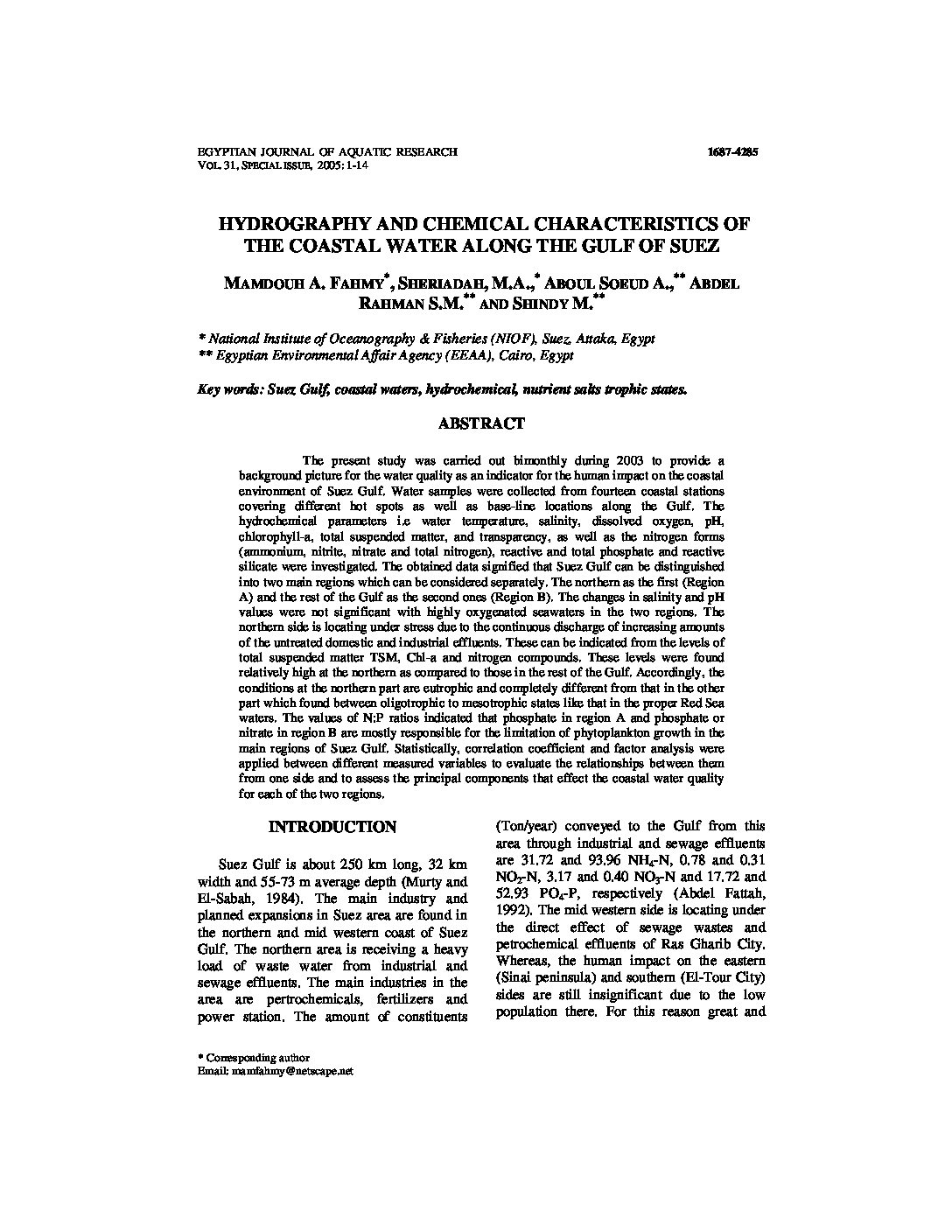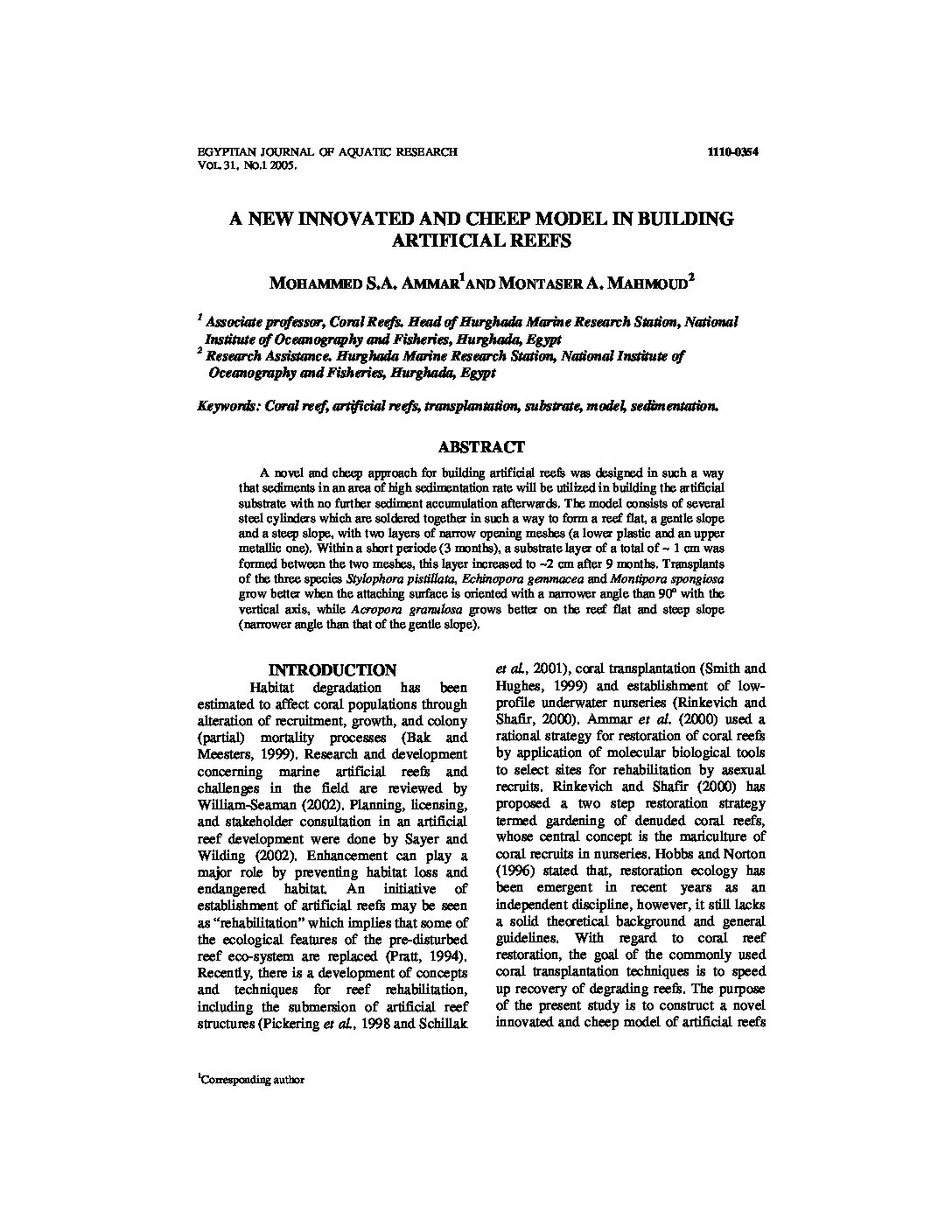Categories
vol-31HYDROGRAPHY AND CHEMICAL CHARACTERISTICS OF
THE COASTAL WATER ALONG THE GULF OF SUEZ
MAMDOUH A. FAHMY
*
, SHERIADAH, M.A.,
* ABOUL SOEUD A.,
** ABDEL
RAHMAN S.M.
**
AND SHINDY M.
**
* National Institute of Oceanography & Fisheries (NIOF), Suez, Attaka, Egypt
** Egyptian Environmental Affair Agency (EEAA), Cairo, Egypt
Key words: Suez Gulf, coastal waters, hydrochemical, nutrient salts trophic states.
ABSTRACT
The present study was carried out bimonthly during 2003 to provide a
background picture for the water quality as an indicator for the human impact on the coastal
environment of Suez Gulf. Water samples were collected from fourteen coastal stations
covering different hot spots as well as base-line locations along the Gulf. The
hydrochemical parameters i.e water temperature, salinity, dissolved oxygen, pH,
chlorophyll-a, total suspended matter, and transparency, as well as the nitrogen forms
(ammonium, nitrite, nitrate and total nitrogen), reactive and total phosphate and reactive
silicate were investigated. The obtained data signified that Suez Gulf can be distinguished
into two main regions which can be considered separately. The northern as the first (Region
A) and the rest of the Gulf as the second ones (Region B). The changes in salinity and pH
values were not significant with highly oxygenated seawaters in the two regions. The
northern side is locating under stress due to the continuous discharge of increasing amounts
of the untreated domestic and industrial effluents. These can be indicated from the levels of
total suspended matter TSM, Chl-a and nitrogen compounds. These levels were found
relatively high at the northern as compared to those in the rest of the Gulf. Accordingly, the
conditions at the northern part are eutrophic and completely different from that in the other
part which found between oligotrophic to mesotrophic states like that in the proper Red Sea
waters. The values of N:P ratios indicated that phosphate in region A and phosphate or
nitrate in region B are mostly responsible for the limitation of phytoplankton growth in the
main regions of Suez Gulf. Statistically, correlation coefficient and factor analysis were
applied between different measured variables to evaluate the relationships between them
from one side and to assess the principal components that effect the coastal water quality
for each of the two regions.







